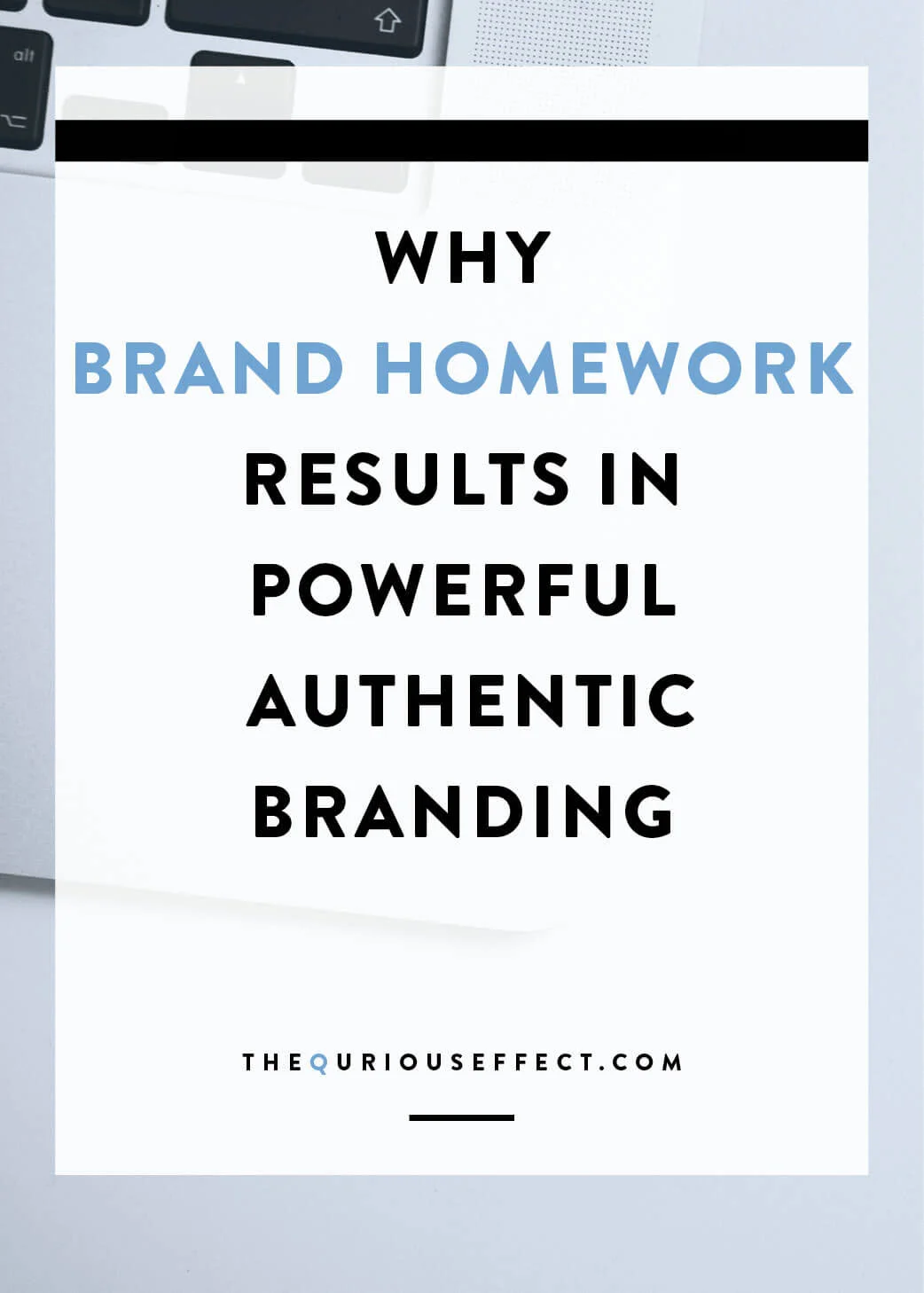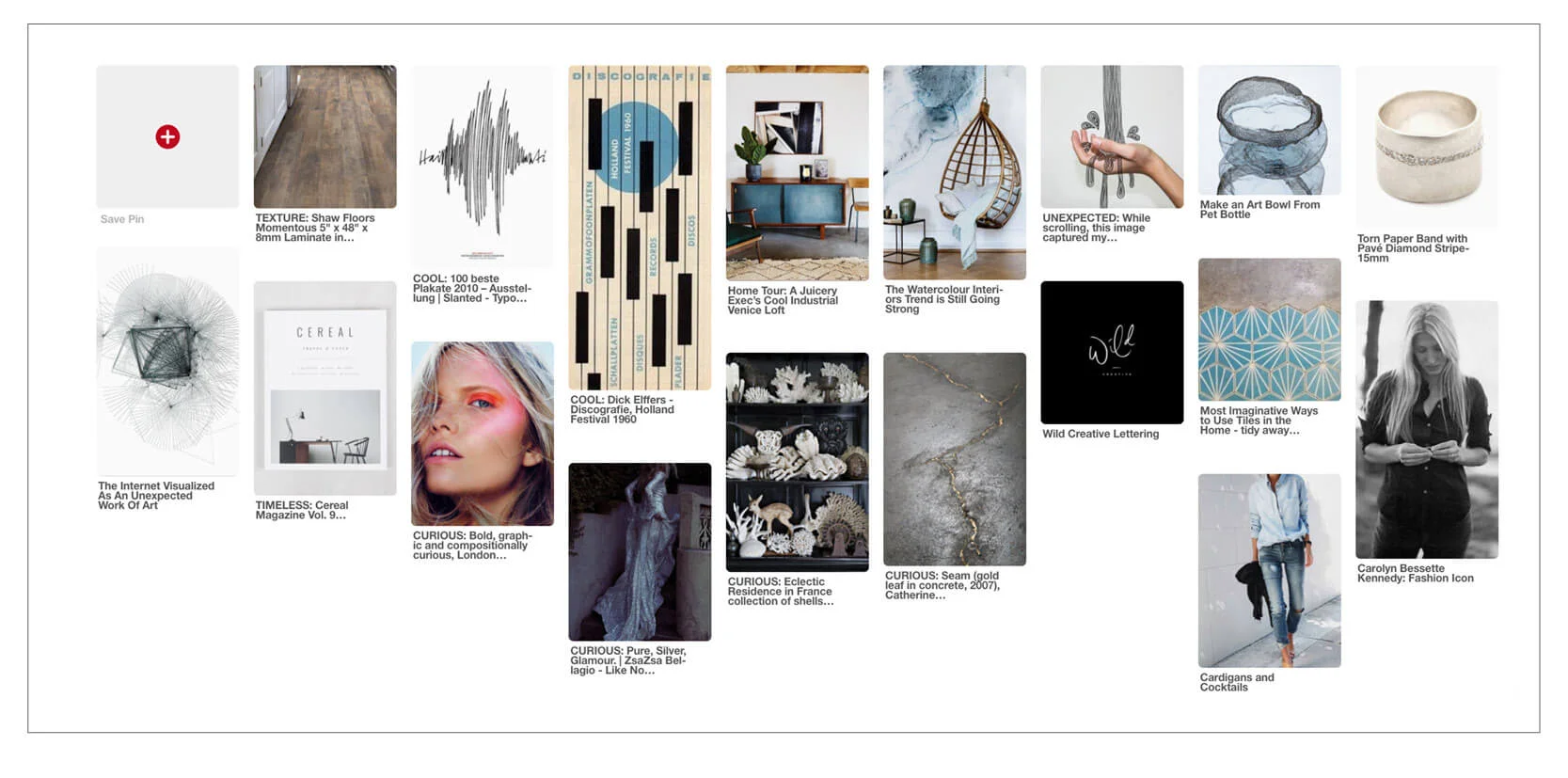Why Brand Homework Results in Powerful, Authentic Branding
... and what the heck is it anyway?
In order for you or your graphic designer to create an authentic, powerful brand identity for your business, there is some vital information that you need to be able to provide them upfront.
Because asking a designer to come up with a brand identity for your business without this information is pretty much the same as putting your hand in a bag full of logo designs and going with the one you randomly pull out. It’s also the same as trying to have a successful brand identity developed for $5 on Fiverr.
You’ve probably seen the terms ‘Client Homework’ or ‘Branding Worksheet’ around social media and on graphic designers’ websites. That’s a good indication of how important this topic is in relation to creating a brand that you love and is irresistible to your ideal clients.
For my design process, it’s the first step in a project after being hired. Once I’ve been hired, there is a purposeful window of time for my client to complete their homework. Because figuring out all this stuff about your business can take a while if you haven’t spent much time on it already.
And I want you to take the time on it. For the sake of your business success, the money you’re spending on the project and because I want to be able to do my best work for you.
I promise you, the key to creating a unique, powerful brand identity that will work so hard for your business lies within this part of the project. It is totally worth it and will feel so good once you get it done.
If you haven’t yet read my post What Every Entrepreneur Needs to Know About Branding, I highly recommend you click on the link to read it and download the free workbook that goes along with the post. The Brand Development workbook will give you a jumpstart on defining your brand and make it a lot easier to complete your brand identity homework while working with a designer.
In order to create an authentic, powerful brand, you need to know what your business’s purpose is, who it’s ideal clients are and what value your business offers those clients.
Branding is about your business’s:
Mission
Vision
Target Audience
Personality
Core Values
These are items you need to have already defined or be willing to define as you go through the client homework portion of your brand identity design project.
So let's take a closer look at what this homework is and why it's so valuable
Your Mission
Your mission statement is made up of one to two sentences that say what you do, who you do it for and why. It’s the reason why your business exists. Here’s a basic, fill in the blank example:
I do (what) for (whom). I provide (value) by (how) for my clients.
Don’t worry if your mission statement doesn’t fit within this super basic example. As long as you’re addressing what you do, for whom, how you do it and what value you provide, you’ll be good. Feel free to make it feel like you. In fact, it’s best if you do make it feel like you as you’ll see just below.
Your Vision
Your vision is a statement about where you’d like your business to go. It can be on a small scale or grand one.
Either way it needs to be true for your business. Think about where you want to take your business and brand? No worries if you’re not trying to change the world with your business.
The key here is not to let yourself get overwhelmed. Feel into what’s true for your business and dream about where you would love to see it go. After all it’s your business, so you get to decide!
Your Target Audience/Ideal Client
Who do you want to work for? Describe them and why they need you.
Being able to come up with an exact ideal client, giving her a name, age, background, career and other details helps so much more than a generic statement such as female, between the ages of 25-40, business owner.
It can be helpful to think of someone you’ve worked with in the past, who you loved working with and who you feel you did a really good job for. If you loved working with someone and did an outstanding job for them, then that’s a great example of who else you’d like to work with.
Your Personality
If I were to ask you how you would describe your business, what would you say? Go ahead, think about it ... How do you describe your business? Is it formal and buttoned up? Casual and throw the f-bomb around? Bold and opinionated? Creative and unconventional? List several adjectives that describe your business’s personality. The more the better.
Your Core Values
Otherwise known as what you stand for. By stating your core values, you provide a blueprint for your business to make decisions from. Hmm, this one seems a little tricky compared to the others, huh!
Similar to your vision, you are in total creative control over this. What will guide your business and help you make decisions within your business?
To help you out, I’ve listed a couple examples below.
Here is The Qurious Effect's Core Value Statement:
To empower female creative entrepreneurs to create success in their business so they can make a positive impact in the world.
I’m not usually one to be won over by cuteness – unless it involves animals – so I can’t pass up sharing this amazing version of core values from the Build-A-Bear Workshop:
Reach, Learn, Di-bear-sity, Colla-bear-ate, Give, Cele-bear-ate
Come on, how cute is that?! And so appropriate for the business.
So what can you state about your business that will help you make decisions regarding whether or not a project is right for you, if a decision will help move your business forward in the direction of your vision and whether it will help your ideal clients?
And that’s almost the end of the brand identity portion of my client homework but there is one final piece to this step in the process. It gets mentioned so much on it’s own, out there in social media land, that I’m going to devote an entire blog post to it next. For now, I’ll leave you with a brief overview of the item.
The Inspiration Board or Mood Board
It’s kind of like the reward for making it through answering all the tough brand development questions. We switch from using words to describe your business to images. I ask my clients to set up a secret Pinterest board and share it with me.
On the Pinterest board, I ask them to pin anything and everything they feel drawn to that represents their business. The goal is to pin around 50 items to the board. The pins can include any subject matter and from them I’m looking to pull inspiration for typography, logo design, colors, textures, patterns and feel.
This is an example of my business’s Pinterest inspiration board. Every time I look at it, it makes me happy.
For me, I feel the inspiration board is just as important as the written questionnaire because it allows my clients to speak to me in a way that they may not be able to find the right words for.
For example, someone might describe their business’s personality as bright and sophisticated but there are many different color palettes and design directions that could fall under within that description. The visual inspiration board allows me to see in more detail what they mean by bright and sophisticated.
Other homework items
My client homework process involves two more items. Both of which are less intensive than the brand identity part. There is a website questionnaire and a collateral/workflow questionnaire.
The website questionnaire is straightforward nuts and bolts types of questions. It allows my clients to work through the function of their website and see what they will need to gather in order for me to create and populate the site.
The collateral/workflow questionnaire helps clients determine which four pieces of collateral will make the most sense for their business, so I can create functional collateral items that will provide my client with the most bang for their buck.
To sum this all up
By completing client homework and being able to define your business strategically, we’re able to determine what makes your business unique and separates you from anyone else working in your field. This is also known as your Unique Selling Proposition.
Your Unique Selling Proposition will help ensure that we create an authentic, powerful brand without having to try too hard. No one else will answer the questions in the exact same way you do. If anything feels off or not quite right, you should review your answers and refine them until everything does feel just right.
After all, you didn’t start a business to follow someone else’s rules or business plan, right?!
So take the time and set yourself and your designer up for success by committing to answering the questions.
With client homework complete, we can begin to design your authentic, powerful, unique brand identity.
you might like to read
SO WHAT DO YOU THINK?
Are you struggling with any of the brand homework questions? Let me know in the comments below.
Are you ready to work with a pro? If you’re interested in learning more about working with me, check out my services page.











